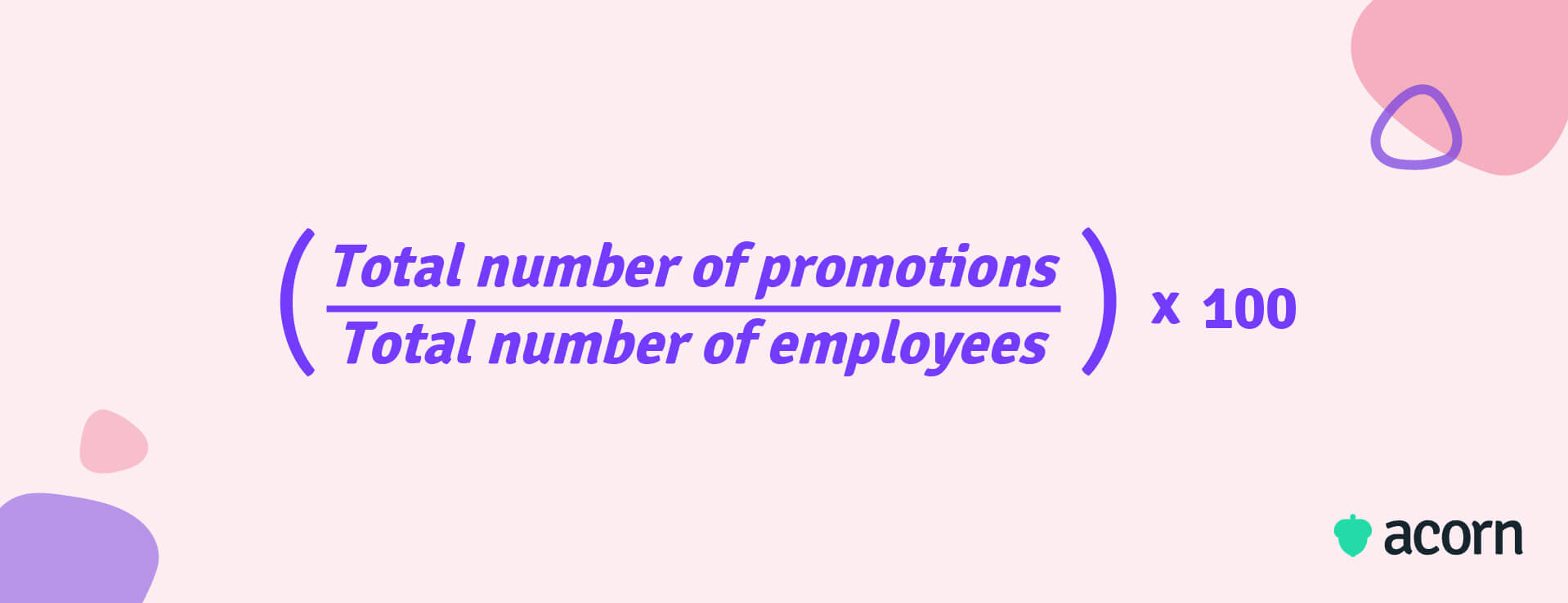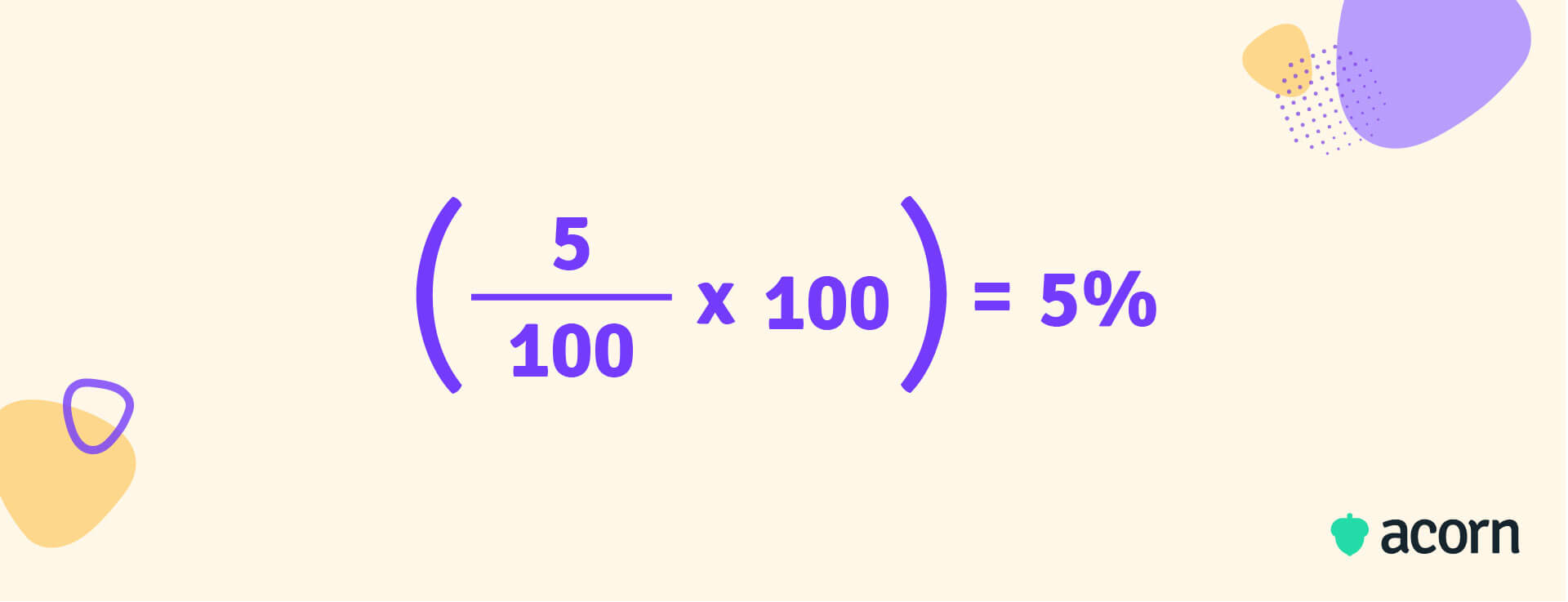How to Calculate & Benchmark Your Internal Promotion Rate
Reading Time:

Lead the pack with the latest in strategic L&D every month— straight to your inbox.
SubscribeUnderstanding internal promotion rate sheds light on the strength or weakness of internal mobility within your workforce.
As your organization grows, it becomes necessary to promote top performers to lead and manage other employees, allowing for more efficient business operations. Promotions, particularly internal promotions, are a crucial way employers can show they appreciate and recognize employee effort and mean to continue investing in their careers.
But how many promotions are necessary for a company, and how many are too many? In this blog, we’ll dig deeper into how to calculate and benchmark the rate of internal promotions in your business.
What is a promotion rate?
Promotion rate is a human resources metric measuring the frequency at which employees are promoted within an organization. It’s calculated by dividing the total number of promotions in a fiscal year by the total number of employees. Promotions can be internal or external and are usually accompanied by increased pay or job titles. They can also be vertical, horizontal, or dry (more on this later).
What is a good promotion rate?
“Good” promotion rates vary based on the industry, size, and circumstances of the business. If your company is growing, merging, or acquiring new businesses, it might have a high number of promotions to keep up with the change. SHRM’s Customised Human Capital Benchmarking Report suggests that the average promotion rate sits around 6%.
In the US during 2022, the five industries with the highest promotion rates were:
- Technology, information, and media
- Professional services
- Financial services
- Utilities
- Manufacturing.
While the industries with the lowest promotion rates in 2022 were:
- Government administration
- Education
- Hospitals and healthcare
- Consumer services
- Hospitality.
It’s helpful to look at industry benchmarks to put your own promotion rate in perspective, showing whether you’re creating enough upward mobility to keep talent engaged—or moving people too quickly and stretching performance standards thin.
Factors affecting promotion rates
Promotion rates can be influenced by several factors from within and outside an organization. Some of the more common factors affecting promotion rates are:
- Company culture, such as if an organization prioritizes learning and employee development. 94% of employees say they’d stay with an organization longer if it invested in their development, allowing them to build the capabilities required for more advanced roles within the business. At the same time, toxic workplace cultures drive turnover rather than promotion.
- Employee performance is a key driver behind promotion decisions. High-potential, high-performing talent are more likely to be selected for promotions. This isn’t to say that all top performers should be promoted to leadership or management roles, but it is a key indicator.
- The number of open positions. When there are more opportunities for advancement, promotion rates increase, but with fewer opportunities, fewer employees will advance.
- Leadership styles. Leaders who invest in career growth create more promotion opportunities, as employees build the capabilities for higher-level roles. Poor leadership often does the opposite—driving turnover instead of advancement.
- Financial context. Economic downturns or tight team budgets can slow promotions, while growth periods can accelerate them.
- Industry dynamics and trends. If an industry requires highly specialised capabilities, promotion rates might increase as organizations attempt to retain and develop their top talent.
- Diversity and inclusion initiatives. Strong DEI initiatives can increase promotion rates for underrepresented groups by ensuring fair access to advancement. Weak initiatives can harm retention if employees leave for more inclusive workplaces.
Understanding these drivers helps HR leaders separate the factors they can influence—like culture, leadership, and DEI—from those shaped by external forces, ensuring promotion rates are read in the right context.
How to calculate promotion rate
You can calculate your promotion rate with one simple formula:

Step 1: Determine the time period
Start with the time frame you’re measuring—usually a financial year, but you can also look at quarters or shorter periods depending on your needs.
Step 2: Define promotions
The next step is defining what, exactly, you’re considering a promotion.
- Internal promotions are when an existing employee is moved into a higher position.
- External promotions are when an external candidate takes on a role in a new company that is higher than their previous position.
Both promotions can also take different forms.
- Vertical: upward movement with more pay, responsibility, and a new title.
- Horizontal (lateral): movement across roles at a similar level, usually with a pay bump but minimal change in responsibility.
- Dry: added responsibilities or a new title without the expected benefits, which often drives turnover.
Let’s say you don’t want to include external promotions in your calculations, because you’re measuring internal mobility. Your calculations will involve only the internal vertical promotions that occurred over your chosen time period.
Step 3: Identify the population
Decide whether you’re measuring promotion rates across the whole organization or within a single department. Whole-of-company numbers show scaling and growth. On the other hand, departmental numbers show where advancement is concentrated, indicating which teams are experiencing the most growth.
For our example, let’s say you want to look at the promotion rate of the whole organization, which has only 100 employees.
Step 4: Find the number of promotions
Now that you have defined what to consider as a promotion for this metric and you’ve also identified the relevant population , you can find the number of promotions that occurred within that population during the set time period.
Example: In a 100-person company, five employees were promoted internally over the past financial year.
Step 5: Calculate the promotion rate
Finally, you can calculate the promotion rate with the formula above.
So, if:
- Promotions are defined as both vertical and internal
- The promotion rate of the whole 100-person company is being measured for the specified financial year
- There were five promotions company-wide over the course of the financial year
Then your formula will look like this:

If your business is operating as expected across the year, this is a good promotion rate that lines up with the average promotion rate according to SHRM. ut remember: if your business is in growth mode, a 5% rate may actually signal a gap. Too few promotions compared to growth needs often leaves leadership stretched thin, impacting engagement and productivity.
The challenges of measuring promotion rates
The promotion rate is a useful metric for tracking upward mobility, but it has limits, especially if you rely on it in isolation.
Like all HR metrics, it needs context. Promotion rate should be considered alongside retention, turnover, engagement, and even revenue per employee. Looking at promotions alone won’t show whether they’re improving morale, productivity, or business results.
Take our earlier example: in a 100-person company, a 5% promotion rate looks healthy against benchmarks. But if that business is in a growth phase, the same 5% might signal deeper issues. Think: A toxic workplace culture, lack of employee engagement, low morale, or job dissatisfaction.
Promotion rates can also highlight gaps in recognition and career development. But the problem often isn’t the data — it’s the way organizations use it. This disconnect formed the basis for our Review at the Scene original, a dramatic look at what happens when performance conversations aren’t based in reality and promotions seem like lottery picks.
Only by pairing the promotion rate with other data and metrics can you see the real story.
There’s another blind spot: promotion rates track movement, not performance. They show who’s been promoted, but not whether those employees are succeeding in their new roles. That’s why it’s critical to connect promotion metrics with performance metrics. It’s also why we built the first performance learning management system (PLMS), which helps guide employees through the specific capabilities needed in their role, and link learning directly to organizational performance.
This is all to say that organizations should treat the promotion rate as one piece of a bigger picture. Evaluating the underlying causes—culture, leadership, capability gaps—will give you more insight than the number itself. Because at the end of the day, it’s those causes that drive engagement, retention, productivity, and the bottom line. line.
Key takeaways
There’s no singular right or wrong answer to what a good promotion rate is, so you need to be sure to measure the rate of promotions against specific industry benchmarks. It’s better to focus more on what promotion rates are affected by, like:
- Company culture
- Employee performance
- Available positions
- Leadership styles
- Financial and economic factors
- Industry trends
- Diversity and inclusion initiatives.